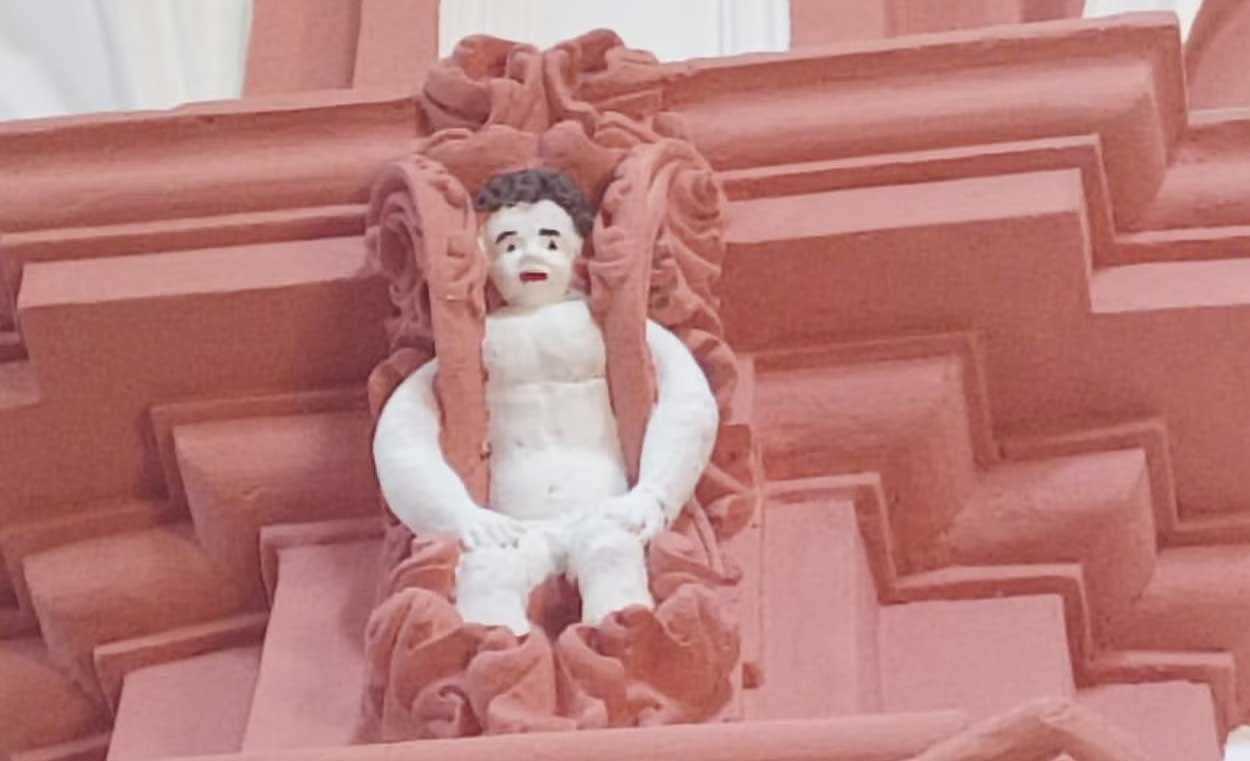
The bold makeover of an historic 16th century church in Spain has left heritage groups seething and drawing comparisons to the infamous ‘monkey Christ’ restoration of 2012.
The Ermita de Nuestra Señora del Mirón, which is located in the north-eastern city of Soria and built in 1725, recently received a colourful paint job.
Heritage preservation group, Soria Patrimonio, shared before-and-after photos of the controversial restoration on X, formerly Twitter.
READ MORE: ‘Worst season ever’: How things got ugly on Greece’s ‘Instagram island’
The white of the church has now been painted with dusky pink stripes. Of particular affront to the group is the over-enthusiastic paintwork on the cherubim.
The restoration has been judged to have left the cherubim looking stunned and “caricature-like” with their newly bright red lips and dark eyebrows.
“What have they done to the Ermita de Nuestra Señora del Mirón?” the group asked.
“It’s a listed building, but even if it weren’t, any work on a monument such as this had to be subject to minimum guarantees.”
“We’ve ended up with the decorative elements being outlined and the cherubs – which were white before – becoming caricature-like.”
READ MORE: The Sydney mansions that have been sitting empty for years
Spanish news outlets have been quick to make the comparison to the botched restoration of the “Ecce Homo” fresco, in the northern Spain town of Borja, which resulted in global news coverage.
In 2012, a local amateur artist decided the circa 1930 depiction of Christ at the Sanctuary of Mercy church needed restoration, but the face she produced immediately was judged to look like a monkey.
Another Spanish restoration attracted similar ire in 2020, with the sculpture on the exterior of an ornate office building in the city of Palencia judged to look like a cartoon after the work was done.
Referring to the Soria church’s restoration, the online newspaper El Confidencial ran the story with the headline: “Another Ecce Homo, but with Cherubs?”
ACRE, the professional association of conservators and restorers in Spain, has waded into the debate, saying more oversight of historic restorations is needed.
“There needs to be multidisciplinary teams to avoid these kinds of efforts,” Acre said in a statement.
“There needs to be weekly inspections to keep track of the works and to prevent invasive and disrespectful alterations.”
links to content on ABC
9News





